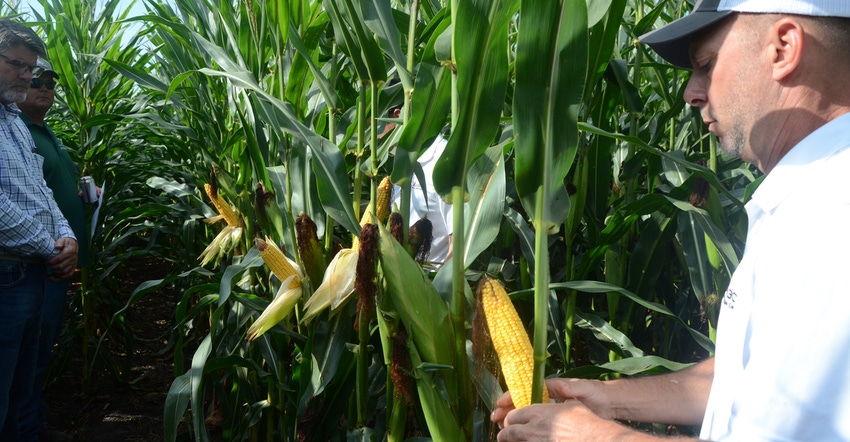
Seed singulation is something most farmers are aware of, but don't always pay attention to at the start of the year when preparing the planter to hit the field.
"If you went back 20 to 25 years, it was less important because hybrids could flex ear size and ear number more," said Darren Goebel, global director of agronomy and farm solutions at Agco. "Today, we're getting more fixed-ear-type hybrids that are getting the same length of ear, same number of kernels around the ear, no matter if they have a neighbor or not, so getting the spacing and singulation right is more important."
However, when singulation and spacing errors show up in the field, they mean an impact on yield at the end of the season. Over the last two years, Agco has researched corn seed singulation and spacing at plots across the Midwest. Traditionally, it's been difficult to test singulation and spacing without simultaneously affecting population, but Agco researchers have done so with some simple modifications to seed plates.
"We took a seed disk and drilled two holes in that seed disk and plugged two holes in that seed disk. This way we could have the exact same population no matter if I have a seed disk that's correct, or seed disks we call 'goof plates' that have been doctored," Goebel said. "We averaged 93.1% singulation out of that [incorrect] seed disk, compared to seed disks that were correct — 99.6%. Then we looked at the yield difference. For every 1% loss of singulation, we were losing a bushel per acre."
At a recent field day at one of these plots near Fremont, Neb., Goebel demonstrated just how singulation and spacing errors affect yield and profitability.
Counting off 1/1,000 of an acre, or 17 feet and 5 inches of a single 30-inch corn row planted using this "goof plate" meter, Goebel counted off the number of plants, doubles and skips on the plot — 26 plants, three pairs of doubles and six skips.
"In that 17.5-foot space, if we're missing one plant and multiply it out across the whole acre, missing that one plant or one ear equates to 7 bushels," he said.
"Don't these outside plants make up for the skips, because they put on a bigger ear? That used to be the case," Goebel said.
Counting kernels on the ears on plants just outside of skips and taking it times the number of plants per acre divided by the average number of kernels per bushel (560 × 26,000/90,000), these bigger ears had an estimated potential yield around 161 bushels per acre, compared to ears on normal plants in the same plot (448 × 26,000/90,000) at about 129 bushels — a difference of over 30 bushels.
"These [outside ears] at 160 bushels per acre are yielding about 20% more, but not enough to make up for the one or two additional ears that would be in between in the skip," Goebel added. "In general, 20% more yield on either ear is typical for a skip, and it's never going to make up for the ear or two that are missing."
Compared to skips, doubles are usually less costly. In the space of one plant, there are two plants — each contributing an ear. Research shows that on average, those two plants typically produce the equivalent of one ear, when the smaller ears produced on the double-planted stalks are combined. With above-average conditions, the yield potential increases. When ears are stressed under droughty conditions, yields suffer more compared to normal ears. So, having a normal, full-sized ear on a single plant is always preferable.
So, what can be done about it? One of the most obvious factors is the seed meter. Precision Planting vSet meters (equipped on White VE series planters) feature double eliminators that don’t need adjustment, a flat disk and recommended vacuum pressure settings. These meters usually have 99%-plus singulation with variable seed sizes in the same hopper.
For conventional vacuum seed meters, setting vacuum pressure too high can increase the risk of doubles. On the other hand, setting vacuum pressure too low can increase the occurrence of skips. Making sure seed size is consistent is also important — and that depends largely on the planter and its meter. With enough attention to detail and a good seed dealer that can get the seed size needed, it's possible to get good singulation with any seed meter.
About the Author(s)
You May Also Like






